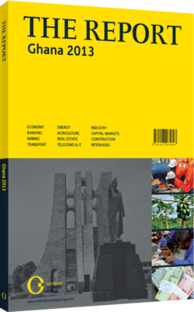Continental divides: Rising African production has ramifications for Ghana’s export potential
Improved technology and global demand for natural gas has set explorers scouring the African landmass and offshore waters for new deposits. Ghana is a beneficiary of this wave of exploration, but plans for increased output from elsewhere in Africa, the Middle East and Asia have affected the outlook for the country’s energy policies – particularly concerning exports. While exporting gas or gas-generated electricity can bring in immediate revenues, the global market is becoming more competitive. Hydrocarbons clearly have a multiplier effect on growth, the global gas market is more elastic and Ghana’s options for using its reserves are somewhat limited. Several elements increase competition for gas exports, but the rise in African reserves to more than 106trn cu feet over the past decade, with scope for 494trn cu feet more, is worth examination because it is perhaps the most dramatic.
GLOBAL MARKETS: The jump in production has noticeably tightened the export market, particularly as the US continues to boost domestic shale output, which in turn has affected the outlook for African producers. Dropping pricing structures in the US, which hit a 10-year low in April 2012, resulted in a rise in interest from foreign markets. East Asian firms in particular began inking contracts for future supplies with Americans.
Demand is rising significantly, thanks to higher levels of consumption in emerging markets, with the International Energy Agency estimating that it will grow by 50% by 2035. Given the potential jump in supply, whether revenues will be sustained during that period is less clear, however. Demand has already slackened during previous periods. During the height of the financial crisis, for example, demand for liquefied natural gas (LNG) dropped, prompting major exporters like Algeria to scale back production by 10%. At the same time, new LNG operations in countries including Qatar, Yemen, Indonesia and Russia have added supply to the market. In late 2009 major LNG importers such as Italy, South Korea and Japan were buying less than usual, and European stocks were higher than normal. With the EU debt crisis continuing to dampen demand in one of the world’s largest gas consumers, and with China’s momentum slowing, which means the increase in demand may be more than offset by the boost in supply.
Production is set to increase significantly on the continent as well, both thanks to new offshore finds in countries like Mozambique as well as plans for higher output from traditional producers. Egypt has been pumping gas for more than forty years now, but its natural gas reserves were equivalent to just over 60trn cu feet by the middle of 2011, a 50% increase from the start of the last decade, and production doubled from 371bn cu feet in 2000 to 742bn cu feet in 2011. Algeria, who currently has a total capacity of 943bn cu feet spread across four complexes, is building an additional 9m tonnes per annum of new capacity and is targeting a raise in export levels to 3trn cu feet by 2015. Nigeria, which has more natural gas than any other country in Africa, exported 17bn tonnes of LNG in 2010 and is doubling LNG trains under the Gas Master Plan, significantly increasing capacity in the medium-term.
NEWCOMERS: Angola has also begun to lay plans to leverage its 10.6trn cu feet of proven reserves, with aggressive exploration for new deposits and plans to start a 5m-tonnes-per-annum LNG train near Soyo. In East Africa, Tanzania and Mozambique have both come across massive new discoveries. ENI and Anadarko have made finds in the waters off the shores of Mozambique that, between them, amount to a potential recoverable estimate of some 99trn cu feet.
New discoveries from firms like Statoil in Tanzanian waters have helped triple Tanzania’s estimated total reserves to roughly 28.3trn cu feet. Africa’s total gas reserves are estimated at over 530trn cu feet now, as opposed to 424trn cu feet in 2000, and LNG capacity is projected to increase by 44.9m tonnes per annum by 2014, according to Petroleum Economist, a trade journal. The cumulative growth in gas production from Ghana’s neighbours will have direct and indirect ramifications for the country’s production and strategy.
You have reached the limit of premium articles you can view for free.
Choose from the options below to purchase print or digital editions of our Reports. You can also purchase a website subscription giving you unlimited access to all of our Reports online for 12 months.
If you have already purchased this Report or have a website subscription, please login to continue.

